Acrox Technologies MU02 Bluetooth Optical Mouse User Manual
Acrox Technologies Co., Ltd. Bluetooth Optical Mouse
user manual
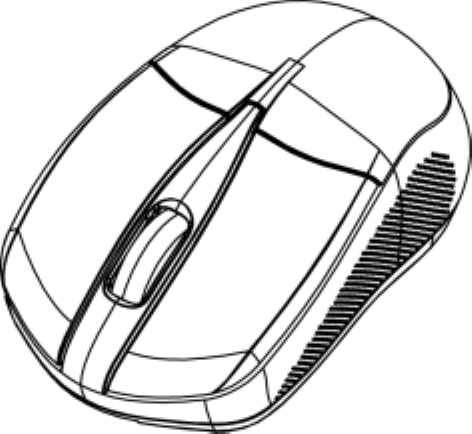
Bluetooth Optical Mouse
OWNER'S GUIDE
Ver.1.0
1
Federal Communication Commission Interference Statement
This equipment has been tested and found to comply with the limits for a Class B
digital device, pursuant to Part 15 of the FCC Rules. These limits are designed to
provide reasonable protection against harmful interference in a residential
installation. This equipment generates, uses and can radiate radio frequency
energy and, if not installed and used in accordance with the instructions, may
cause harmful interference to radio communications. However, there is no
guarantee that interference will not occur in a particular installation. If this
equipment does cause harmful interference to radio or television reception, which
can be determined by turning the equipment off and on, the user is encouraged to
try to correct the interference by one of the following measures:
- Reorient or relocate the receiving antenna.
- Increase the separation between the equipment and receiver.
- Connect the equipment into an outlet on a circuit different from
that to which the receiver is connected.
- Consult the dealer or an experienced radio/TV technician for help.
FCC Caution: Any changes or modifications not expressly approved by the party
responsible for compliance could void the user's authority to operate this
equipment.
This device complies with Part 15 of the FCC Rules. Operation is subject to the
following two conditions: (1) This device may not cause harmful interference, and
(2) this device must accept any interference received, including interference that
may cause undesired operation.
Per FCC 15.21, you are cautioned that changes or modifications not expressly
approved by the part responsible for compliance could void the user’s authority to
operate the equipment.
FCC RF Radiation Exposure Statement: This equipment complies with FCC RF
radiation exposure limits set forth for an uncontrolled environment. This device and
its antenna must not be co-located or operating in conjunction with any other
antenna or transmitter.
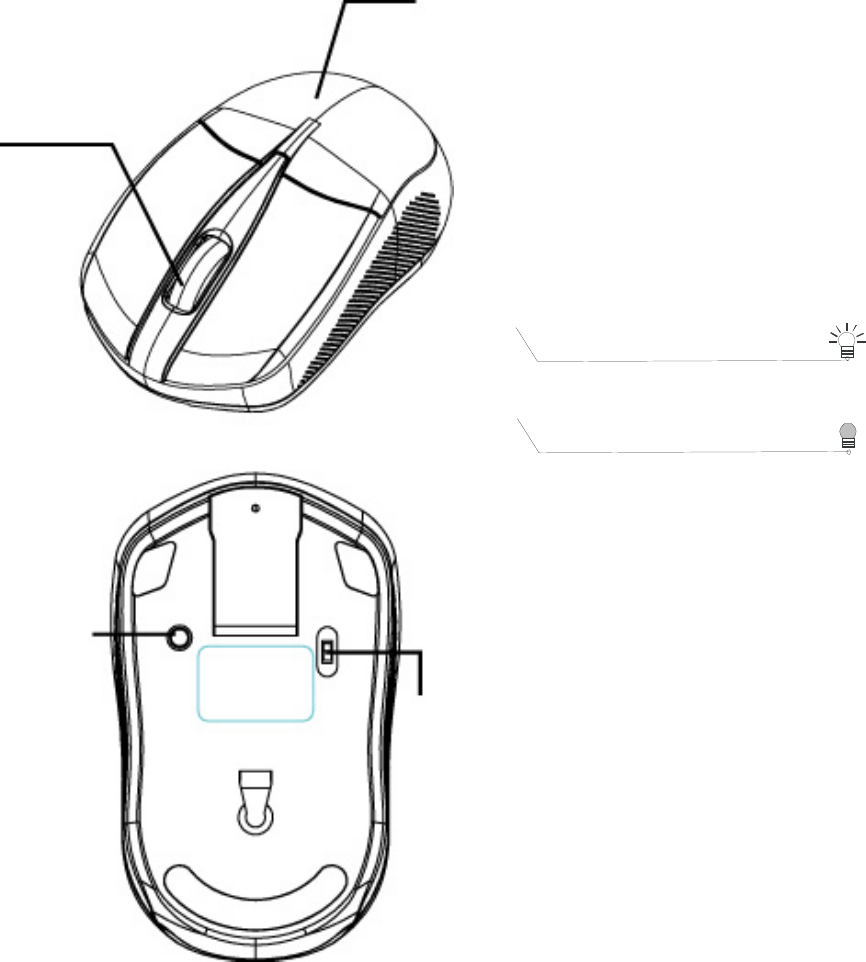
2
Functional Introduction
Mouse Wheel &
Pairing LED
Battery Cover
Connect
Button
ON / OFF Switch
LED Blinking
Paired Link
LED OFF
Connected OK
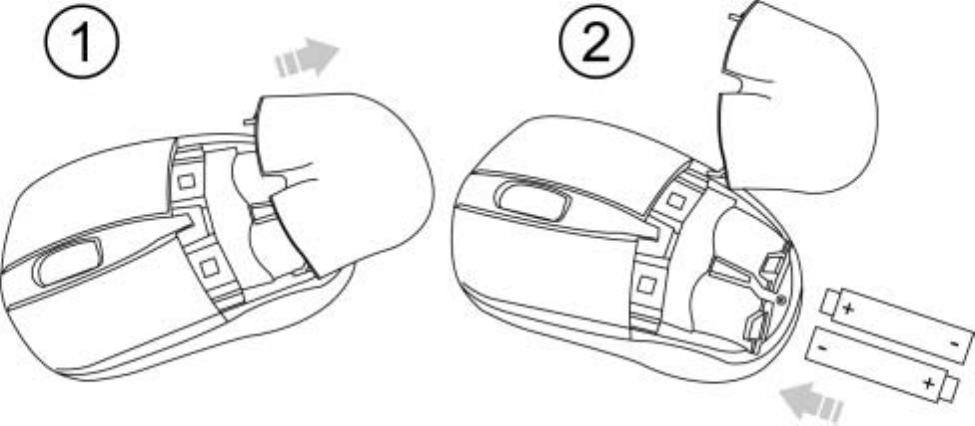
3
Battery and Power Management:
Installing the batteries
Step 1: Pull the battery cover backward.
Step 2: Insert the batteries as shown inside the battery compartment.
Step 3: Replace the cover.
Power saving features:
To conserve the battery power, the mouse offers power management
functions as below:
1. The mouse goes into “Saving Mode” after 30 seconds of inactivity.
2. The mouse powers down to “Sleep Mode” after 10 minutes of
Inactivity.
Press one of the mouse buttons to wake it up while in Sleep Mode.
There may be a slight delay while the mouse re-establishes Bluetooth
connection from power saving or sleep mode.
Push

4
Establishing a Bluetooth Connection
The Bluetooth mouse can work in any Bluetooth working environment.
Before connecting your Bluetooth mouse with your computer, make sure
your computer has a working Bluetooth configuration that meets
Bluetooth Specification v1.1 or higher with Human Interface Device (HID)
profile. If your computer does not support Bluetooth, you need to obtain
and install a commercially available Bluetooth adapter which converts
your computer to a Bluetooth environment.
Paring your Bluetooth mouse with your computer
Before paring your Bluetooth mouse with your computer, you should
read through the instructions that came with your Bluetooth hardware
and software for detail how to pair a device to your specific Bluetooth
configuration. Follow below steps to pair your Bluetooth mouse under
Windows XP/SP2 system.
1. Attach or turn on the Bluetooth radio adaptor for your Windows XP
computer.
2. Switch on the mouse.
3. Click Start menu, click Control Panel and double click “Bluetooth
Devices”.
4. On the “Devices” tab, click “Add”.
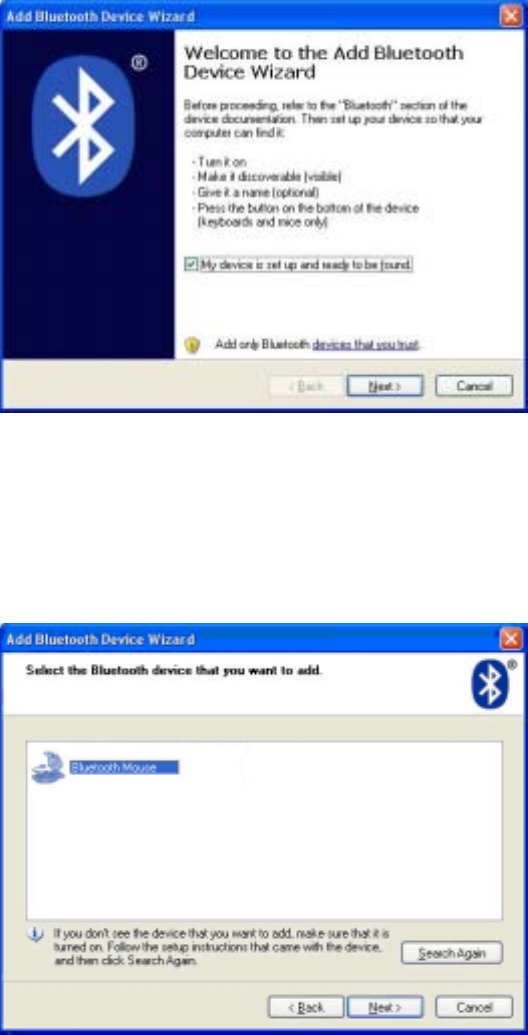
5
5. Select the “My device is set up and ready to be found” check box,
and then click “Next”.
6. Press the connection button of the mouse and it starts paring with
your PC/notebook. The Green LED light will blink when connecting.
Click the icon that represents the Bluetooth mouse, and then click
“Next”.
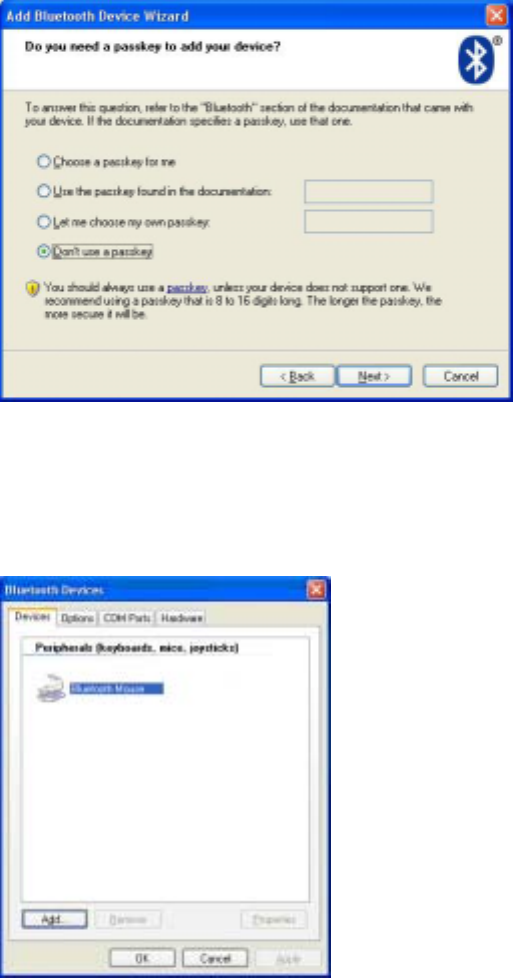
6
7. Click “Don’t use a passkey”, and then click “Next”. Check the
documentation for the mouse for any passkey instructions.
8. You can find the Bluetooth mouse in the “Devices” tab when it
connected. The Green LED will turn off automatically when the paring
is successfully done.
Note : Once the Bluetooth mouse is installed, you can either disconnect the wired
mouse or leave it connected. (If you leave both mice connected, they will
both work.)
7
Disconnecting Bluetooth mouse from your computer
If you would like to disconnect your Bluetooth mouse, just open the
Bluetooth devices control panel and delete the pairing for the mouse.
8
Troubleshooting
A. Mouse does not work upon installation or is not detected
Try one or more of the following:
Make sure you have installed the batteries correctly and turn the switch on.
Replace a fresh set of batteries if it still doesn’t work.
Make sure that computer’s Bluetooth is enabled.
Press the connection button to reset the Bluetooth connection between your
mouse and computer. Make sure it had been detected by the Operating
Systems properly.
B. The screen cursor does not move properly
If your screen cursor lags behind the movement, then your Bluetooth
connection may not be able to transmit all of the data from the mouse
with the necessary speed. This may be caused by interference from
other radio sources, obstructions in the radio wave path, excessive
distance from the computer, or a combination of the above.
※Try the following actions to improve your Bluetooth connection and
optimize your mouse performance:
Remove any metallic objects from the line of sight between your computer
and Bluetooth mouse.
If you are using a computer with a built-in Bluetooth antenna, try
reorienting the computer until you get a better data rate.
If you are using a Bluetooth device, use a USB extension cable and place
the Bluetooth adapter onto your desktop or somewhere in sight of your
Bluetooth mouse.
Move the mouse closer to your Bluetooth device.
Power off the mouse and turn it on again for better connection.
Disconnect any Bluetooth audio devices, such as headsets, that may be
connected to your computer.
Switch off any other devices operating in the 2.4 GHz radio spectrum,
such as Wi-Fi network, mobile telephones, etc., or move their antennas
further away from your computer.